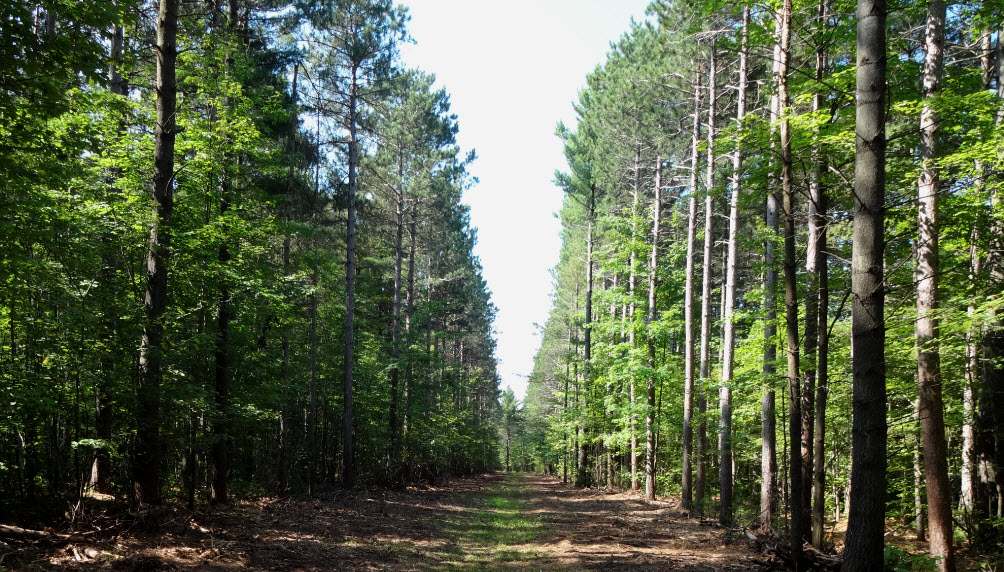This geocache is one of twenty Historical Geo-Passport geocaches within the South Nation Jurisdiction. For more information on this series of geocaches, please visit South_Nation.
Take a walk in the Larose forest and find this geocache. There are plenty of great trails, some more consistently maintained than others. The best of the possible trailheads have been added as additional coordinates.

Histoire / History:
Au cours des années 1800, les premiers colons européens ont développé un commerce lucratif issu des coupes forestières, profitant des marchés croissants des villes canadiennes et d'une exportation régulière vers l'Europe. Les forêts sont rapidement tombées sous les scies et les haches, les terres défrichées ont été cultivées et la vie était belle. Cependant, sans la protection des arbres, l'érosion combinée du vent et de l'eau a eu comme résultat que les terres agricoles déboisées ont perdu leur mince couche de terre arable.
À la fin des années 1930, Ferdinand Larose, un employé du ministère de l'Agriculture de l'Ontario, a eu la vision et le dévouement de résoudre ce problème. Ferdinand et son équipe ont commencé une plantation d'arbres qui se trouve aujourd'hui être la deuxième plus grande plantation forestière du Sud de l'Ontario.
Le terrain a été acheté aux propriétaires privés par le comté et replanté manuellement. Le pin rouge était la première espèce à être plantée, puis le pin blanc et l'épinette blanche, ensuite les espèces à feuilles caduques ont suivi, tel que le bouleau ou le peuplier. À l'apogée des efforts de replantation dans les années 1940 et 1950, près d'un million d'arbres furent plantés chaque année.
Dès le départ, la forêt était destinée à être un endroit public multi-usage et une ressource exploitée. Aujourd'hui, la Conservation de la Nation Sud aide les comtés dans la gestion de la forêt.
********************
In the 1800’s, the early European settlers made logging a lucrative trade with markets in growing Canadian cities with a steady export to Europe. Forests quickly fell to the saw and the axe, cleared land was farmed and life was grand. However, without the protection of the trees, the clear cut farmland lost its thin layer of topsoil to the combined erosion of wind and water.
In the late 1930’s, an Ontario Department of Agriculture employee, Ferdinand Larose, had the vision and dedication to solve this problem. Larose and his team started a tree plantation that today stands as the second largest plantation forest in Southern Ontario.
The land was bought by the County from private landowners and manually replanted. Red Pine was the first species to be planted, followed by White Pine and White Spruce, and later early-successional deciduous species such as birch or poplar. At the peak of replanting efforts in the 1940s and 1950s, some one million trees a year were being planted.
From the outset, the forest was intended to be a harvested resource, and a multi-use public land. Today, South Nation Conservation assists the Counties with the management of the forest.